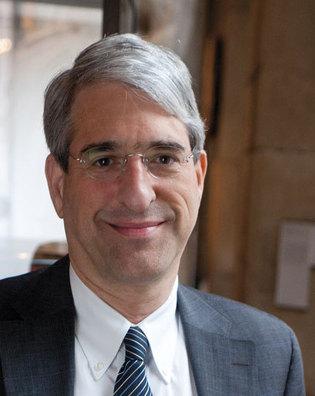 loading
loading
Q&A: Peter SaloveyWho’s in charge of the faculty?Yale’s president answers questions about the creation of a new position at Yale.  Mark OstowView full imageY: Yale is about to create the position of dean of the Faculty of Arts and Sciences—that is, the faculty who teach in Yale College and the Graduate School, as opposed to the professional schools. What’s behind this administrative change? S: Most colleges and universities have a dean of the faculty. In the last several years, a confluence of issues all pointed in this direction for Yale. One is the substantial change made to the tenure process in Arts and Sciences beginning in 2007. Another is the academic review committee that’s been meeting for nearly two years to develop new mechanisms for allocating faculty slots to departments—not an easy task. Y: Especially when money is tight, as Yale continues to trim the budget. S: Absolutely. Out of that committee—which is largely faculty-driven—came the sense that whatever new mechanisms evolve, someone with the responsibility of overseeing the faculty needs to coordinate and facilitate them. The idea also came from the group of faculty serving on committees concerned with faculty input to the provost and the president. The input mechanism for the Faculty of Arts and Sciences is different from that of the professional schools; every one of the professional schools has a dean who can represent the opinions of the school’s faculty—to the extent that faculty members are speaking in a common voice. In the Arts and Sciences, well, there are more than 50 department and program chairs. There are also the roles that the dean of Yale College and dean of the Graduate School play, and there are deputy provosts who oversee groupings of academic departments. This shared leadership model has not always been the easiest way to develop a common vision and then get things done. Y: No single voice, in other words? S: No single voice—to negotiate, for instance, with the provost over budgets. But in my mind none of these is the primary reason driving this change. I think we need to look at the evolving role of the provost and of the deans of Yale College and the Graduate School—positions whose job responsibilities have become quite challenging. The deans are concerned with the educational experience of the students and with student life. Those are big, big areas of responsibility. In addition, each dean was, under our current system, the dean for about half of the Faculty of Arts and Sciences. But a major structural change was introduced about half a dozen years ago: Yale’s adoption of a new tenure and appointments system. Before the system was changed, the majority of untenured faculty in Arts and Sciences never came up for a tenure evaluation. Now every untenured faculty member can expect to receive substantial mentoring and be reviewed for promotion, which means the deans are spending dramatically larger amounts of their time on faculty affairs. The other factor is the change in the role of the provost. Provosts’ offices at most research universities focus not only on budget strategy, but also on long-term planning—the excellence of the programs, departments, and schools, the future of higher education. But the combination of budget challenges and FAS faculty affairs has tended to crowd out opportunities for our provost’s office to focus on these significant strategic questions. Y: Won’t the creation of the new position diminish the authority of the two existing deans? S: I don’t see it that way. The leadership team for Arts and Sciences will now be a three-legged stool. The dean of the Faculty of Arts and Sciences, the dean of Yale College, and the dean of the Graduate School are on equal footing. They will have joint authority over the Arts and Sciences as a whole, and they all report to the provost. I would add that the committee made it one of its principles that this new position should not stimulate the creation of a new bureaucracy but rather encourage the simplification of existing organizational structures. For example, right now, when department chairs want to launch a search for a new faculty member, they go through several steps and consult several different officers, deans, and committees. A dean of the Faculty of Arts and Sciences will provide the chairs of departments and programs a single point of contact for doing this work. I should mention as well that we want to create this office, essentially, by redeploying existing staff. Y: Because the current deans of Yale College and the Graduate School are stepping down, all three deans will be brand new. Isn’t there a downside there? S: It is an interesting moment. Very rarely can a president and provost bring in a team of deans and have the opportunity to choose them for complementary backgrounds, strengths, and styles. That is a great advantage. And because they’ll all be starting at the same time, I think they will develop a team spirit. Now, it is likely true that none of the three people will have been a dean before. And that means the provost and I will be calling on others throughout the university—former deans of Yale College and the Graduate School, sitting deans in professional schools—to help our new deans hit the ground running in the fall.
The comment period has expired.
|
|